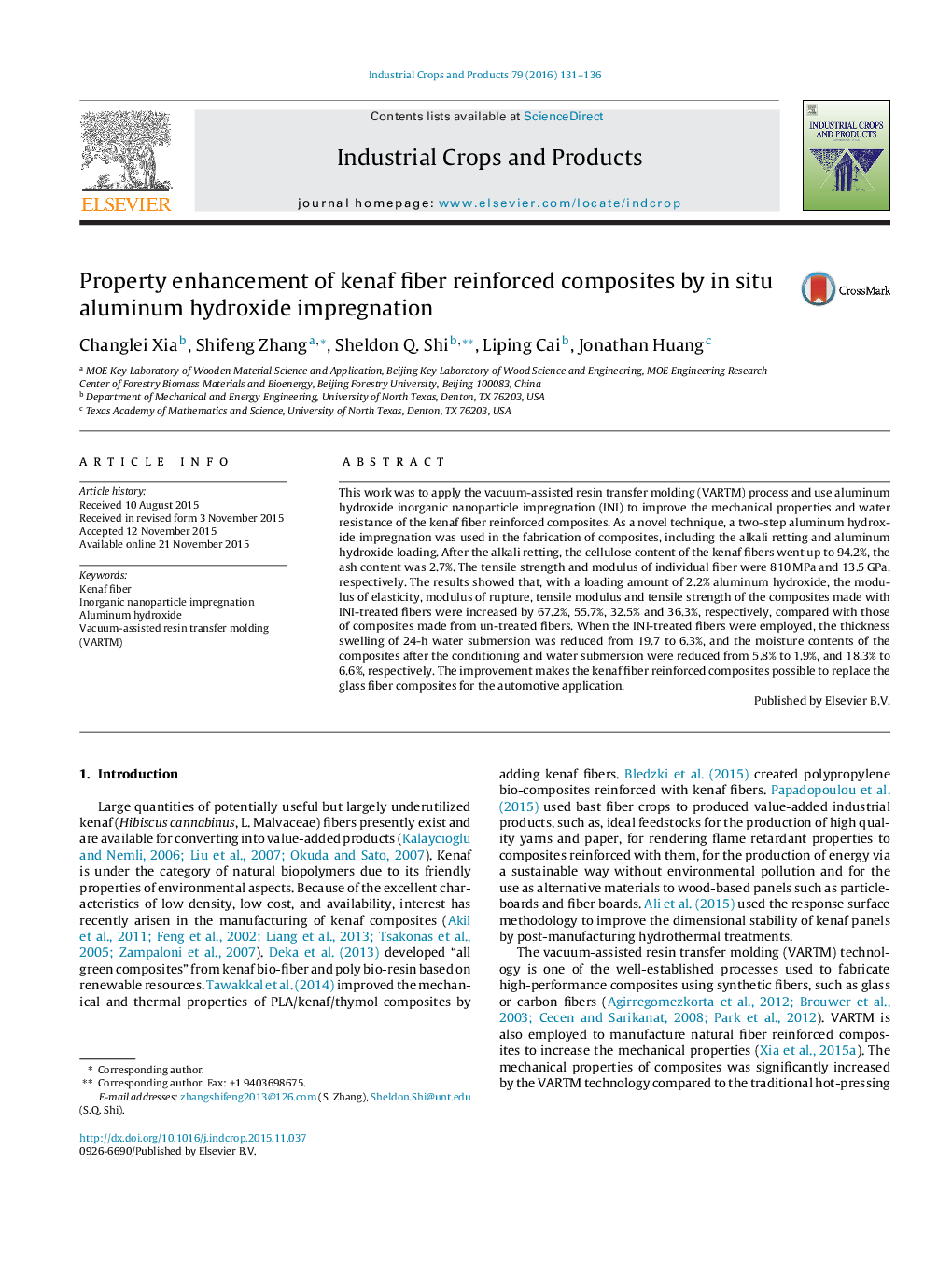| Article ID | Journal | Published Year | Pages | File Type |
|---|---|---|---|---|
| 4512759 | Industrial Crops and Products | 2016 | 6 Pages |
•Composites were fabricated using Al(OH)3 impregnated kenaf fibers and polyester.•Tensile modulus and strength of the composites were increased by 32.5% and 36.3%.•Modulus of elasticity and rupture were increased by 67.2% and 55.7%.•24-h thickness swelling in the water was reduced from 19.7% to 6.3%.•Property improvements make it comparable with glass–fiber sheet moulding compound.
This work was to apply the vacuum-assisted resin transfer molding (VARTM) process and use aluminum hydroxide inorganic nanoparticle impregnation (INI) to improve the mechanical properties and water resistance of the kenaf fiber reinforced composites. As a novel technique, a two-step aluminum hydroxide impregnation was used in the fabrication of composites, including the alkali retting and aluminum hydroxide loading. After the alkali retting, the cellulose content of the kenaf fibers went up to 94.2%, the ash content was 2.7%. The tensile strength and modulus of individual fiber were 810 MPa and 13.5 GPa, respectively. The results showed that, with a loading amount of 2.2% aluminum hydroxide, the modulus of elasticity, modulus of rupture, tensile modulus and tensile strength of the composites made with INI-treated fibers were increased by 67.2%, 55.7%, 32.5% and 36.3%, respectively, compared with those of composites made from un-treated fibers. When the INI-treated fibers were employed, the thickness swelling of 24-h water submersion was reduced from 19.7 to 6.3%, and the moisture contents of the composites after the conditioning and water submersion were reduced from 5.8% to 1.9%, and 18.3% to 6.6%, respectively. The improvement makes the kenaf fiber reinforced composites possible to replace the glass fiber composites for the automotive application.
